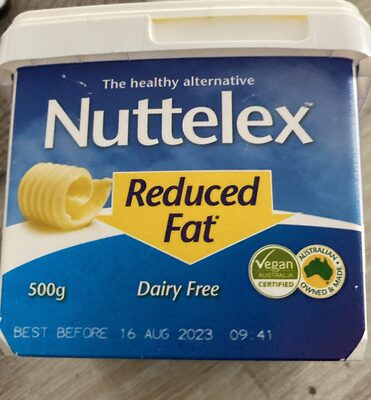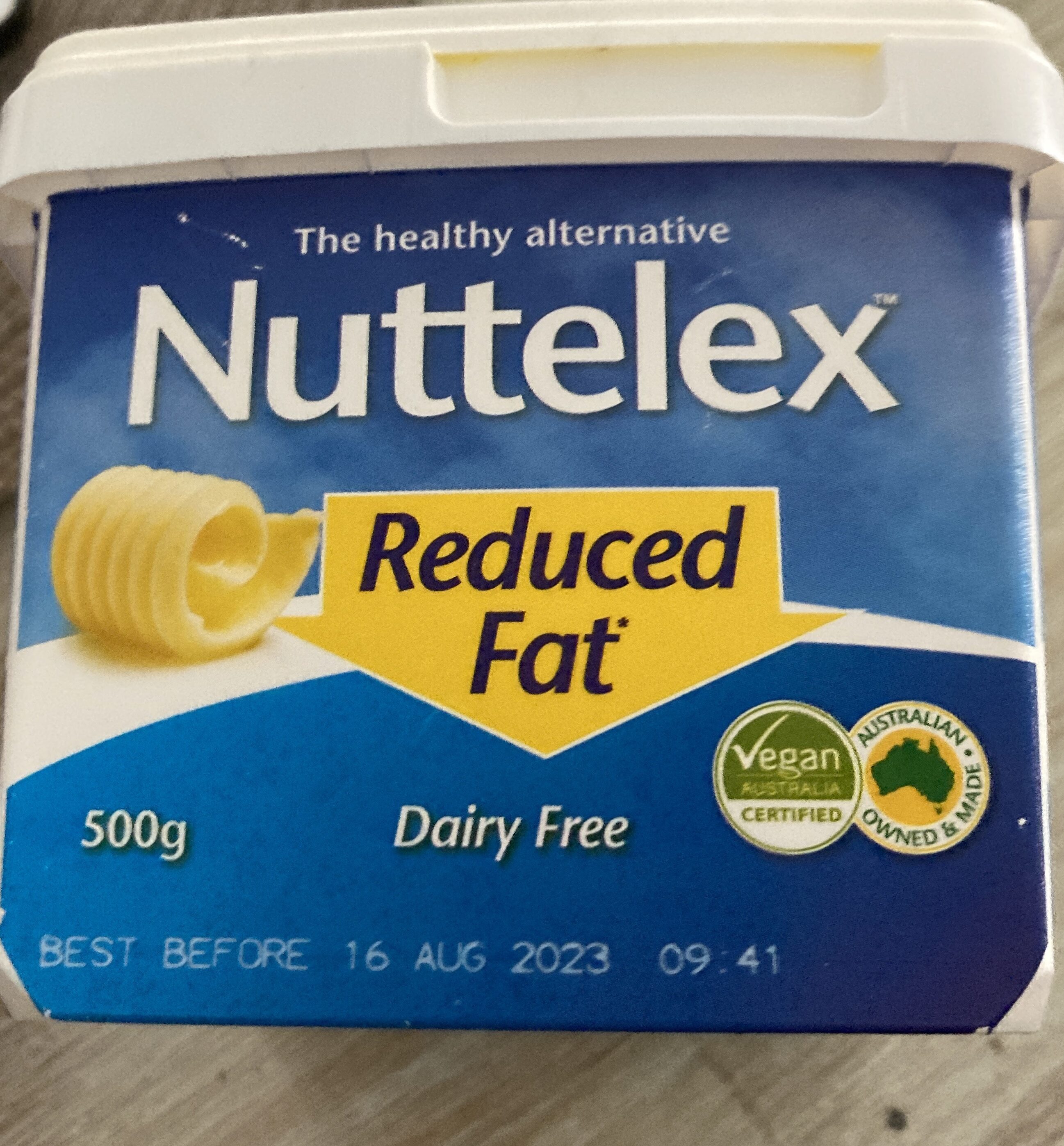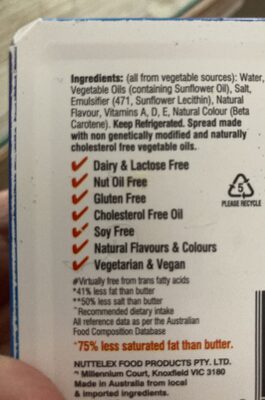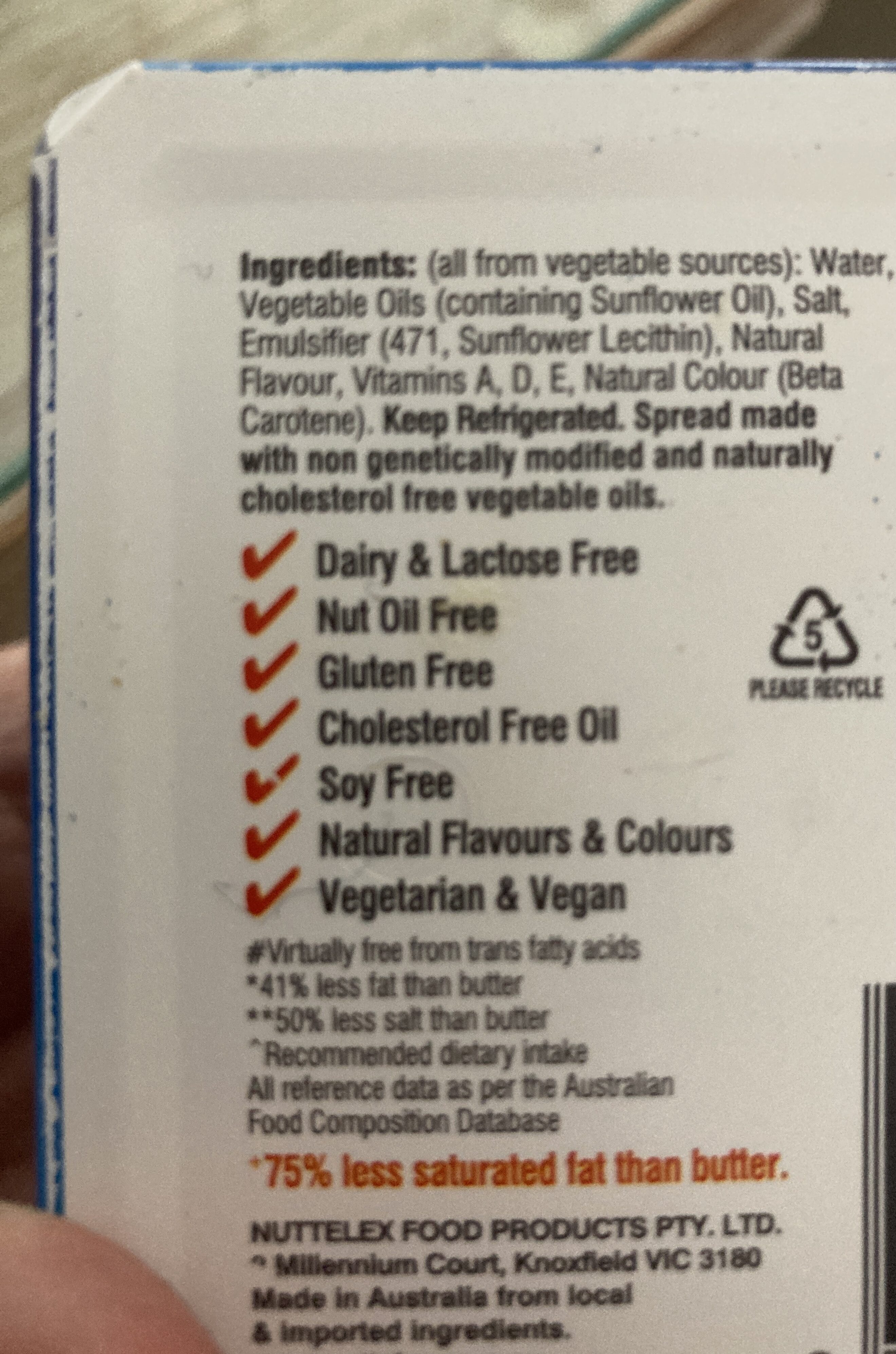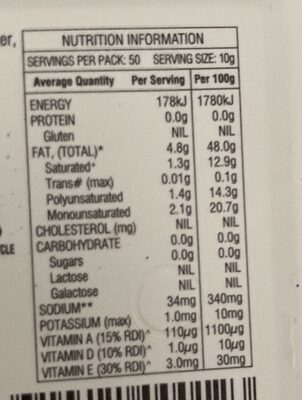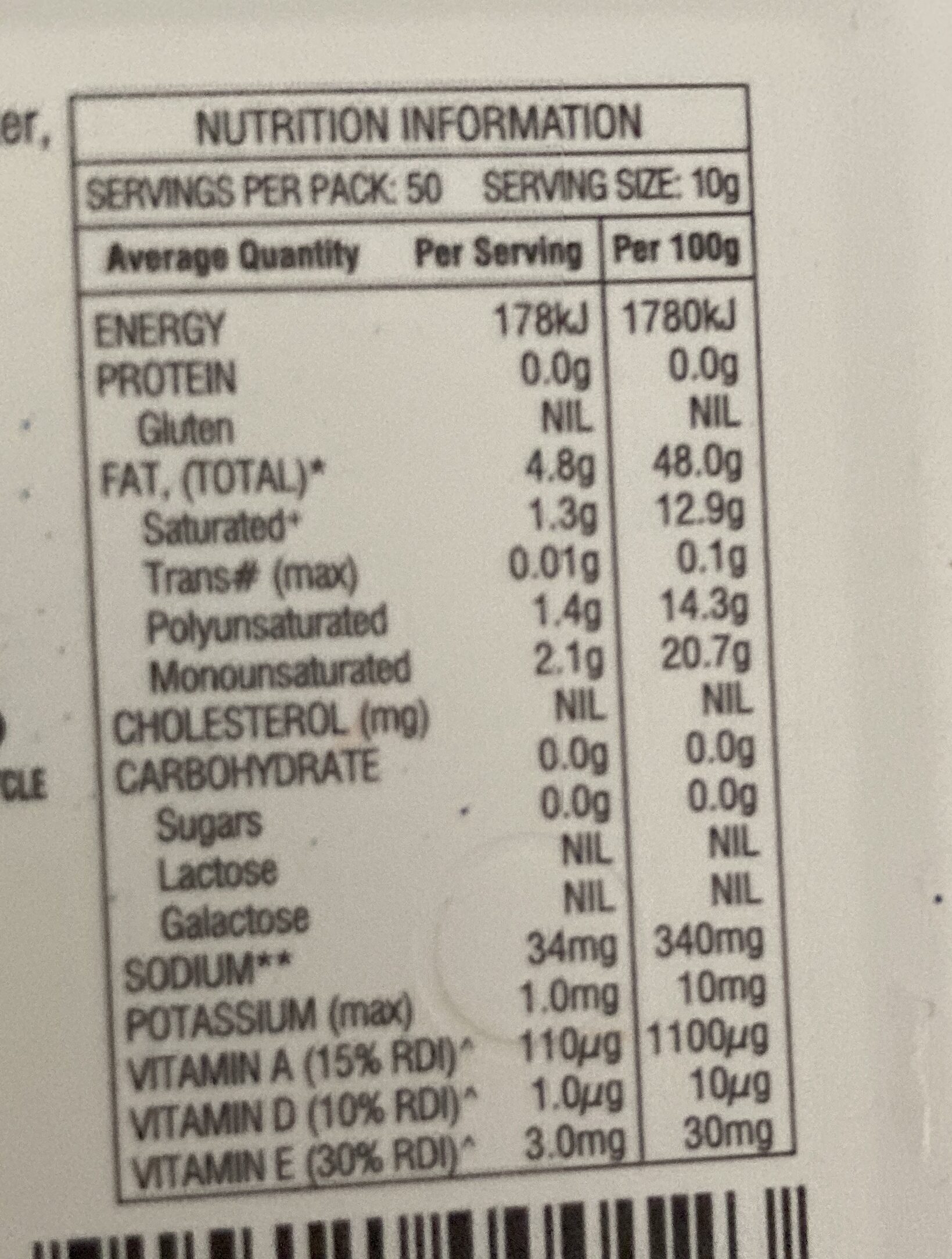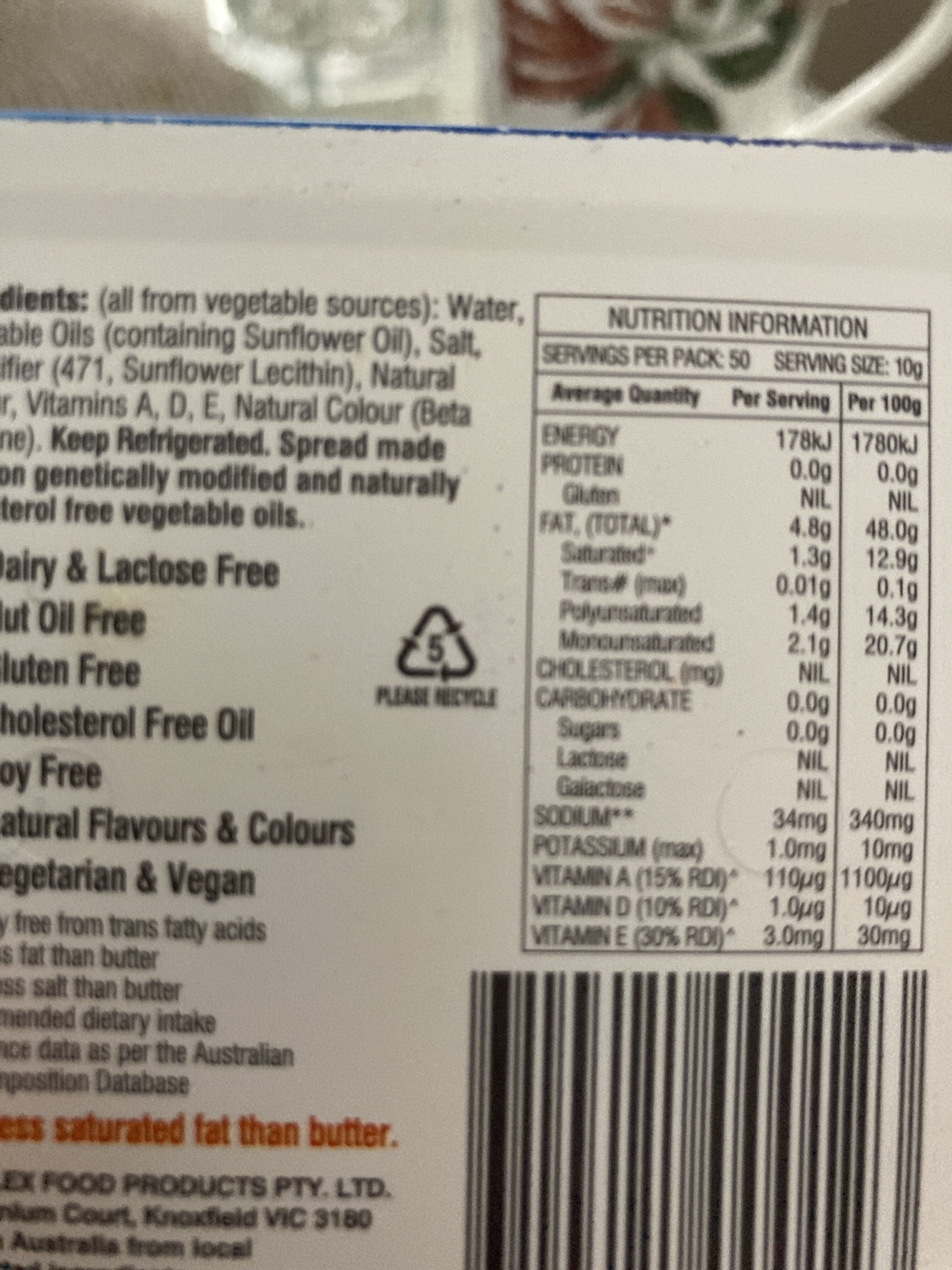Reduced Gat Dairy Free Butter - Nuttelex - 500g
This product page is not complete. You can help to complete it by editing it and adding more data from the photos we have, or by taking more photos using the app for Android or iPhone/iPad. Thank you!
×
Barcode: 9310421000123 (EAN / EAN-13)
Quantity: 500g
Brands: Nuttelex
Categories: Plant-based foods and beverages, Dairies, Plant-based foods, Fats, Spreads, Plant-based spreads, Spreadable fats, Vegetable fats, Animal fats, Milkfat, Dairy spread, Margarines, Butters, Light margarines, Reduced Fat Margarine
Labels, certifications, awards: No gluten, Vegetarian, Vegan, Australian made, Natural flavors, No lactose, With Sunflower oil, Vegetarian Australia Certified
Stores: Woolworths
Matching with your preferences
Report a problem
Data sources
Product added on by kiliweb
Last edit of product page on by leoxc.
Product page also edited by archanox, halal-app-chakib, kaye65, roboto-app, wolfgang8741, yuka.sY2b0xO6T85zoF3NwEKvlhFsVcfcrmLkBjHliH-um-unc5G0euBN3ZDxF6s, yuka.sY2b0xO6T85zoF3NwEKvll58Vt39_B_-CRvnpn3V-c-yKoTGb_4q45PfHas, yuka.sY2b0xO6T85zoF3NwEKvlnZhUsvui26bFhf4vGukyvSjF8X3bex7_K7fMKs.
